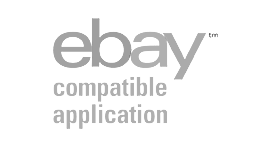You’re first and foremost a business owner. Your focus is on selling more, growing your business, and how to better serve your customers.
You’re not a developer, accountant, or an eCommerce genius. You don’t want to spend time thinking about how to automate order fulfillment, product listings, and inventory updates. You certainly don’t have the time (or the budget) to handle a bunch of vendors to get it done either. So, you’ve put integration off for as long as you can.
However, your current customer experience is telling you that it has been long enough. See what’s ruining your current customer experience and how Quickbooks eCommerce automation can help!
What’s Ruining Your Customer Experience
For growing merchants, it seems that your data becomes complex and messy overnight. You suddenly realize that you have too many orders shipped to wrong addresses. You’re constantly dealing with stock outs, or even worse, overselling You know your product information needs cleaned up, but you can’t find an easy way to do it causing delays when pushing new products to the site.
When selling online, it no longer matters if you have the best product or the lowest price. If you don’t provide an experience that meets customer’s expectations, they will shop somewhere else. Today, merchants expect to compete mainly on customer experience.
However, lack of integration between Quickbooks and your eCommerce platform is usually what’s holding your business back from providing a better customer experience. When important sales data is isolated from each other in different systems, it’s difficult to have accurate, timely data to give insight into how to react to your customers.
You have a lot of data to keep track of: orders, items, inventory, customer, and shipping/tracking data. Without integration, it’s up to you to constantly move and share the data between your systems. It’s easy to make mistakes when doing so.
Shipping addresses entered wrong into Quickbooks means a package isn’t delivered to customers on time. Inventory not updating in real-time can lead to overselling. Inconsistent product information means poor product descriptions that don’t give customers the confidence to buy.
On top of everything, it’s extremely time consuming to manually enter this data from one platform to another. Some merchants have entire teams dedicated solely to manually managing product data or moving order data back and forth. This is wasted time that could be spent improving your customer experience instead.
Without a compelling customer experience, you could be losing sales and giving customers a good reason to shop somewhere else.
Why Integrate Quickbooks with Your eCommerce Channel
Multichannel integration is how you deliver a consistent customer experience across just one (or multiple) eCommerce channels. It saves you time, reduces human errors, and enables you to make better business decisions for your customers.
Integrating Quickbooks and your eCommerce platform centralizes information from your disparate systems so you have a single source of truth. Then, consistent and accurate data is delivered when you need it.
For example, at any given time, you’ll know what your stock levels are and where you need to send more inventory to avoid stock outs. You’ll know when to mark down products, and even how to market in one region versus another. You can immediately push out consistent product listings when needed.
These are all components that must happen behind the scenes for a better customer experience. On the front end, customers will benefit from displayed stock levels, easy to fund product listings, and guaranteed delivery times for packages. You’ll be able to anticipate their needs and meet expectations.
The best part is that it won’t fall on you to enter the data between your systems. Instead, multichannel integration platforms automatically sync data to each of your systems. This frees up your time to get back to being a business owner and focusing on how to grow your brand.
Picking the Right Solution for Quickbooks eCommerce Integration
It’s easy to see the benefits of Quickbooks and eCommerce integration, but it’s another thing to actually do it. As we already said, you’re a business owner, not a developer. Instead of building their own automations, most businesses turn to multichannel integration providers like nChannel to connect their systems.
You must research and choose the right integration solution for your business. When not handled correctly, integration projects can quickly turn into a mess. They can cost you way too much and time and money and still not be exactly what you’re looking for.
However, if you do the work upfront and pick the right approach, you’ll avoid many of the challenges that ruin integration projects.
To get a better idea of how to pick the right solution for your business, check out this guide on integrating Quickbooks and eCommerce channels.
Contact nChannel
We know a thing or two about Quickbooks Online integration over here at nChannel because we’ve done it before! If you want to learn more about Quickbooks Online integration, check out nChannel’s cloud-based platform that integrates Quickbooks Online to other systems like Shopify. Click the link below to get more information about automating your processes.
Connecting Quickbooks Online is what we do best!
nChannel provides the simplest automation tools to connect Quickbooks Online and Shopify (or Shopify Plus) on the market. Click to learn more about our seriously simple integration for Quickbooks Online.
Shopify to Quickbooks Online Integration






Join The Conversation